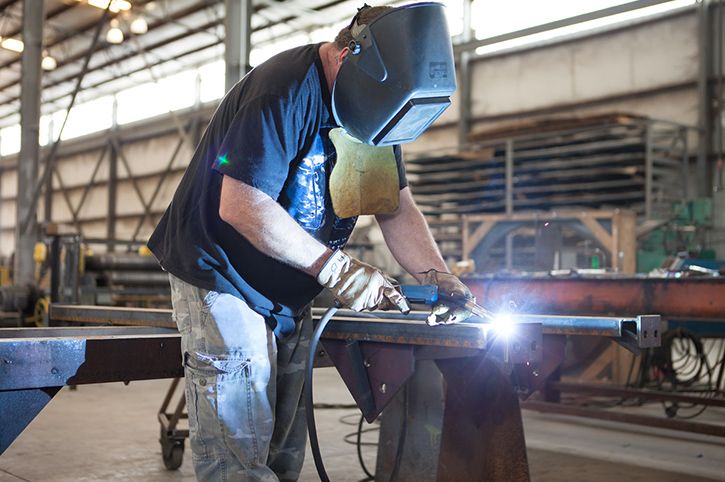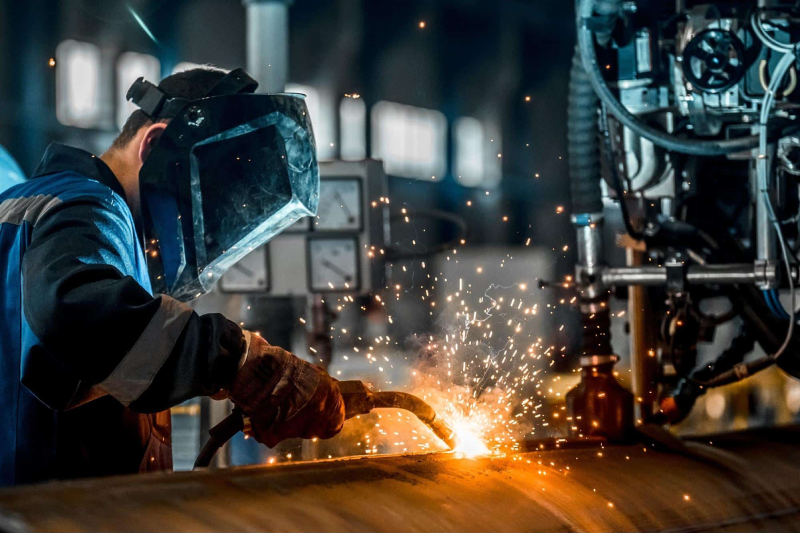Everything about Welding: Trick Insights Into Techniques and Finest Practices for Success
Welding incorporates a selection of strategies, each matched for specific products and applications. Comprehending these approaches, such as GMAW, SMAW, and TIG, is vital for accomplishing perfect outcomes. The best equipment and security techniques can not be ignored. As preparation and troubleshooting play crucial roles in the welding process, mastering these elements can significantly enhance the top quality of the end product. What are the crucial aspects that assure a successful weld?
Understanding Different Welding Methods
Welding techniques incorporate a range of methods, each matched to particular applications and materials. Among the most usual methods are Gas Steel Arc Welding (GMAW), Protected Metal Arc Welding (SMAW), and Tungsten Inert Gas Welding (TIG) GMAW, likewise known as MIG welding, is preferred for its rate and versatility, making it ideal for slim products. SMAW, or stick welding, is preferred for its simplicity and efficiency in outdoor settings, especially with thicker metals. TIG welding uses accuracy and control, making it suitable for intricate job and non-ferrous steels (Belgrade Fabrication). Each strategy has its special advantages and considerations, enabling welders to choose the finest approach based upon the project's demands, product kind, and preferred outcomes. Comprehending these techniques is necessary for successful welding
Vital Welding Devices and Devices
While various welding strategies require details abilities, the best devices and devices are just as crucial for achieving quality results. Necessary welding tools includes welding equipments, which differ relying on the technique-- such as MIG, TIG, or stick welding. Safety gear, consisting of headgears, handwear covers, and aprons, warranties safety and convenience during the process. In addition, clamps and fixtures assist protect products in position, guaranteeing accuracy in welds. Consumables like welding poles, cable, and shielding gas are likewise crucial components that influence the top quality of the weld. In addition, devices such as cutters and grinders facilitate surface area prep work and post-weld completing, adding to a specialist end result. Purchasing top notch devices ultimately boosts the effectiveness and efficiency of welding projects.
Safety Practices in Welding
Correct safety and security methods are important in the welding industry to secure employees from prospective dangers. Welders should put on ideal individual safety equipment (PPE), including headgears with correct shading, handwear covers, and flame-resistant clothes. Appropriate air flow is important to lower direct exposure to hazardous fumes and gases created during the welding process. In addition, workers must be educated in the proper handling of welding equipment to protect against crashes. Fire precaution, such as maintaining flammable materials away from the welding location and having fire extinguishers conveniently offered, are required. Routine examinations of devices and workspaces can aid determine possible risks before they bring about crashes. By sticking to these security techniques, welders can develop a much safer working setting and lessen dangers connected with their trade.
Preparing Materials for Welding
Preparing products for welding is a vital step that substantially affects the quality and stability of the last item (Welding). Proper preparation includes cleaning the surfaces to remove pollutants such as rust, oil, and dust, which can endanger the weld. Strategies such as grinding, sanding, or making use of solvents are typically utilized to accomplish a clean surface. Furthermore, ensuring that the products mesh comfortably is essential; gaps can result in weak welds. It's additionally crucial to consider the placement and positioning of the elements, as this will influence the convenience of welding and the last end result. Lastly, selecting the proper filler product and guaranteeing compatibility with the base steels is essential for accomplishing strong, sturdy welds
Tips for Getting High-Quality Welds
Achieving high-quality welds needs attention to information and adherence to ideal practices throughout the welding procedure. Proper joint preparation is vital, ensuring surface areas are free and clean from pollutants. Choosing the suitable filler material and welding strategy based on the base metals is crucial for excellent bonding. Preserving regular traveling speed and angle while welding can avoid defects and promote harmony. In addition, controlling warm input is crucial; excessive warm can cause warping and weakened joints. On a regular basis checking the welds throughout the procedure allows for prompt changes if necessary. Ultimately, employing suitable browse around these guys post-weld treatments, such as cleansing and stress and anxiety alleviation, can improve the durability and honesty of the weld, eventually making certain an effective result.
Repairing Typical Welding Issues
Welding frequently offers challenges that can influence the top quality and stability of the end product. Typical issues such as porosity, irregular weld grains, and getting too hot can arise, each needing specific troubleshooting strategies. Comprehending these troubles is crucial for welders to improve their skills and attain optimal outcomes.
Porosity Troubles Discussed
Porosity can often be overlooked, it remains a critical issue in welding that can compromise the honesty of a finished item. Porosity describes the presence of little gas pockets within the weld grain, which can weaken the joint and lead to early failing. This trouble generally occurs from contaminants, wetness, or incorrect protecting gas coverage during the welding process. To minimize porosity, welders should validate that the base products are dry and clean, use ideal securing gases, and keep consistent welding parameters. On a regular basis checking the tools and setting can likewise help determine potential issues prior to they materialize in the weld. Attending to porosity efficiently is crucial for achieving strong, long lasting welds that fulfill high quality requirements.

Irregular Weld Beans
Inconsistent weld grains can considerably affect the top quality and toughness of a completed item. Numerous variables add to this problem, including inappropriate traveling rate, incorrect amperage settings, and irregular electrode angles. When the welder relocates as well promptly, a bead may appear narrow and do not have penetration, while relocating as well slowly can cause too much buildup. Furthermore, making use of the incorrect amperage can cause either undercutting or excessive spatter, both of which compromise weld stability. The welder's technique, such as irregular torch motion, can also bring about irregular bead look. To alleviate these troubles, welders need to focus on keeping stable, regulated activities and ensuring proper equipment settings to attain harmony in their welds. Consistency is key to accomplishing trustworthy and strong welds.
Overheating and Bending Issues
Too much warmth throughout the welding process can bring about significant overheating and contorting concerns, influencing the structural honesty of the workpiece. These problems often manifest as distortion, which can endanger positioning and fit-up, making more setting up challenging. Aspects adding to overheating include the selection of welding criteria, such as voltage and take a trip speed, along with the sort of material being bonded. To reduce these issues, welders must preserve constant traveling rate and proper warm input while keeping an eye on the workpiece temperature level. Additionally, pre-heating or post-weld warmth treatment can assist relieve stress and anxieties brought on by fast cooling - Montana Mobile Welding and Repair Belgrade. Routine evaluation and adherence best home welder to ideal practices are crucial in protecting against overheating and making certain the longevity and integrity of welded structures
Regularly Asked Concerns
What Are the Occupation Opportunities in the Welding Market?
The welding market offers varied job opportunities, including placements as welders, inspectors, engineers, and teachers. Professionals can work in production, construction, aerospace, and automotive markets, gaining from solid demand and affordable incomes in various duties.
Exactly How Can I Improve My Welding Rate Without Giving Up Top Quality?
To improve welding speed without sacrificing quality, one should exercise reliable techniques, maintain devices, enhance settings, and enhance hand-eye control. Routine training and looking for comments can likewise considerably add to accomplishing quicker, premium welds.
What Qualifications Are Available for Welders?
Countless accreditations exist for welders, including those from the American Welding Society (AWS), the National Facility for Construction Education And Learning and visit this website Research (NCCER), and numerous industry-specific organizations. These credentials improve employability and show ability proficiency.
How Does Welding Influence the Qualities of Metals?
Welding affects the properties of steels by changing their microstructure, which can cause changes in ductility, strength, and solidity. Warmth input and cooling rates throughout the process greatly influence these product qualities.
Can I Weld Dissimilar Metals With Each Other?
